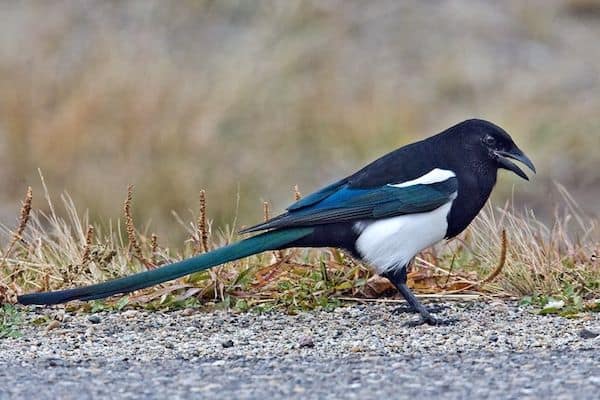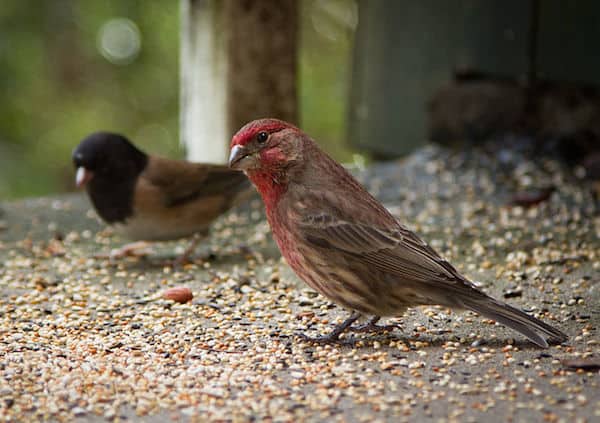It’s hard to mistake the black-billed magpie for anything else, with its bold markings and impressive large size. In flight the magpie flashes black and white. Where you find one magpie, you usually find a flock.
The magpie’s long black tail gives it a crow-sized appearance. Its bold black head, wings, and body, which are bisected with white, can appear greenish blue in direct sunlight. A close relative, the yellow-billed magpie, is found only in the central valleys of California, and features, not surprisingly, a yellow bill. The length ranges from 18 ½ to 19 ½ inches.
Listen For
Common call is a harsh, croaky quah-quah-quahquah.
Find It
Open brushy country, agricultural fields, forest edges, and rangeland with scattered clumps of conifers. They do not mind human areas and can be spotted in towns or agricultural areas where food is readily available and easy to find.
Feeding Behavior
The magpie will scavenge for food in backyards, even boldly stealing food from picnic tables and deck railings. It eats peanuts, pieces of bread, bits of fruit, suet, and meat and other food scraps. Often spotted on roadways, where it feeds on carrion. Black-billed magpies will also raid from the nests of other birds and kill squirrels and voles and other small mammals.
Nesting Behavior
The male and female will work together in nest building. The male will work on the outside wall gathering sticks whereas the female will work on the inside, lining it with mud and grass.
Although they shy away from heavy cover like dense forests, they stay hidden from raptors and so will build nests in open woodland and utility poles. The male and female must choose a nest location together. If they disagree, they can sometimes be seen building separate nests.
Wow!
Until the early twentieth century, black-billed magpies were mercilessly hunted down or poisoned as pests and predators.




